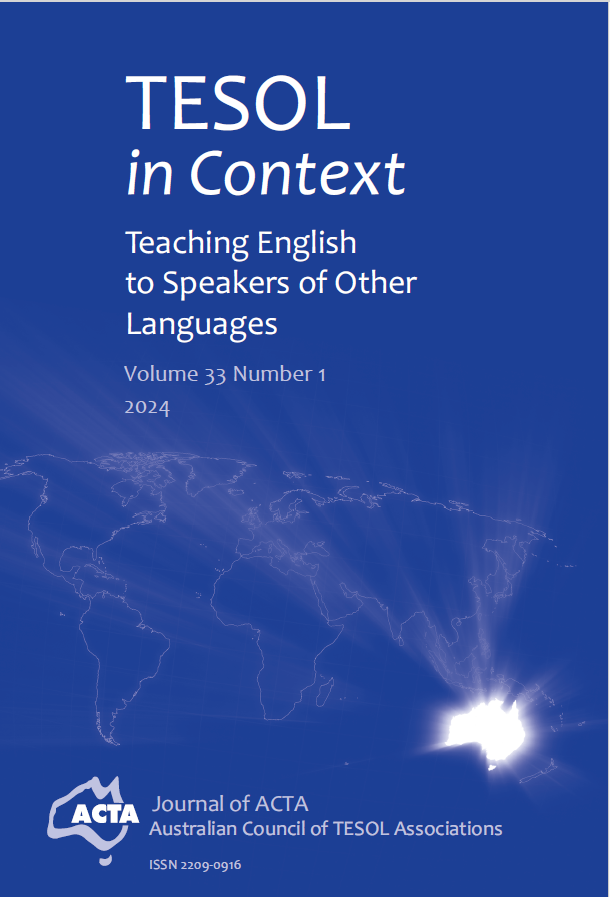AMEP and the Burden of Compliance
DOI:
https://doi.org/10.21153/tesol2024vol33no1art2010Abstract
This article explores the ‘burden of compliance’ experienced by providers and teachers in the Adult Migrant English Program (AMEP), a large national English as an Additional Language (EAL) program in Australia. It shows how compliance requirements have been shaped by the relationship between two groups, those who make and operationalise relevant policies (mainly politicians and public servants) and those engaged in the practice of developing and teaching English courses (mainly teachers, program providers, and academics). These two groups are engaged in a struggle for the control of a metaphoric ‘pedagogic device’ (Bernstein, 2000) which shapes curriculum documents such as the frameworks, scales and teaching resources used in the AMEP. The article examines three key teaching and assessment documents and shows how the compliance requirements attached to each have been shaped by the relationship between these two groups over time. A crucial dynamic governing this relationship is the level of trust between and within them. The article argues that changes in levels and types of trust account for many of the tensions within the AMEP. It begins by describing how compliance was raised as an issue and introduces the key concepts that inform the discussion. The second part of the article tracks changes in approaches to compliance as manifested in three AMEP curriculum documents over 75 years. The third part identifies three policy trends that contributed to compliance becoming the burden currently experienced by providers and teachers. The article concludes that there are signs that trust between stakeholders may be changing, with a potential reduction in the burden of compliance.
Metrics
Downloads
Published
Issue
Section
License
Copyright (c) 2024 TESOL in Context

This work is licensed under a Creative Commons Attribution-ShareAlike 4.0 International License.






